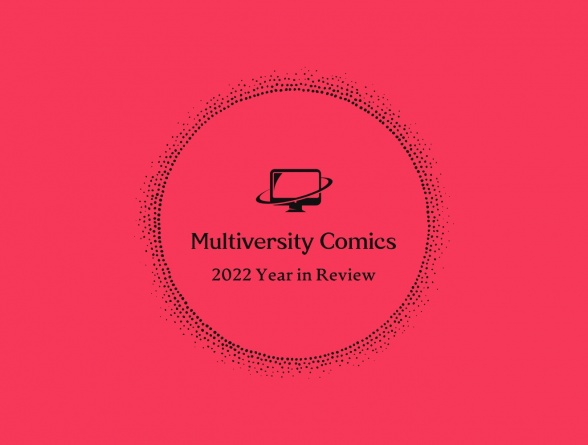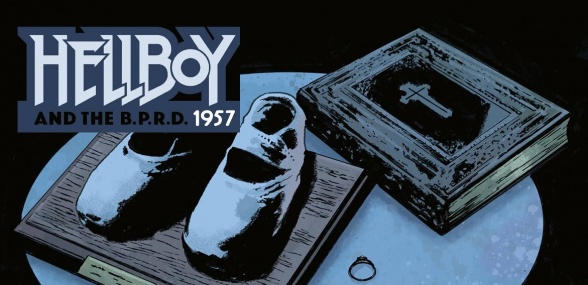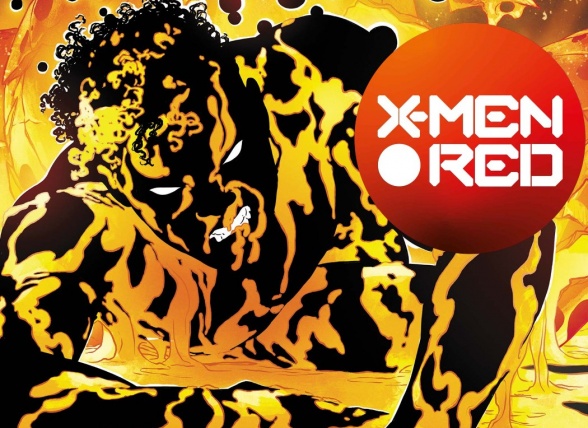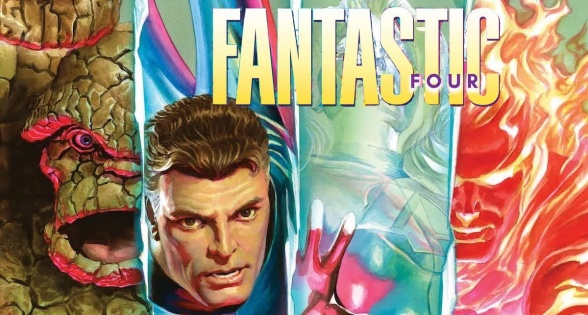
Welcome to the Multiversity Year in Review for 2022! We’ve got over 25 categories to get through, so make sure you’re checking out all of the articles by using our 2022 Year in Review tag.
What is the smallest unit of comic book storytelling? Do you need to read a whole series? Or can it be broken down to something smaller, like a page or a single panel? While there’s a lot you can admire about the craft that goes into every part of a comic, stories tend to be told issue by issue. That’s why it is important to not only look at the bigger picture- sometimes it pays to get small. So every year we honor the year’s best issues, the ones that bring artistry and talent to telling a particular part of a larger story. These are our favorite single issues of 2022.

5. Hellboy and B.P.R.D. 1957: Forgotten Lives
What is the meaning of a life after it ends? What value does a legacy have, and what do we leave behind when we’re gone? These are the deep questions asked by “Hellboy and the B.P.R.D. 1957: Forgotten Lives,” a brooding, melancholy, and ultimately very beautiful comic issue. Masterfully scripted by Mike Mignola and Chris Roberson, ‘Forgotten Lives’ is a special and unique issue of Hellboy. There’s no action, and the supernatural plays a supporting role. Instead this is mostly just the story of two men and the friends they’ve lost.
Mignola and Roberson use the story of a ghost in a mass grave in the Bronx as an entry point to explore death and legacy. Hellboy and Trever Bruttenholm are investigating a ghost, but their heads are really occupied by the thoughts of recently departed friends. It’s an elegiac, sad story, with great dialogue that really understands how people cope. The overarching narrative, of the death of a forgotten comic-book writer, feels in some ways as if Mignola and Roberson are wondering about what they’ll leave behind when they depart.
The art in ‘Forgotten Lives’ likewise is somber, and constrained, lending gravity and weight to a heavy issue. Many artists have drawn Hellboy over the past two decades, but Stephen Green’s pencils manage to do a standout job. Hellboy’s face is expressive and deeply emotive. Green does great work with his eyes, which speak as much as the words do. Dave Stewarts’s coloring is of course completely on point, albeit a little more muted than normal, perhaps to allow the dialogue to take more weight.
Overall ‘Forgotten Lives’ is a marvelous, powerful issue, a super entry in the halls of Hellboy comics. The supernatural story backs the drama and allows real, serious emotion to take center stage. It’s a moving, deeply emotional ghost story, and a phenomenal comic. – Ryan Fitzmartin

4. X-Men Red #4
What’s remarkable about “X-Men Red” is that it consistently is doing so much, so well. You’ve got the worldbuilding on Planet Arakko, a tricky political situation for Storm, and the espionage intrigue of Abigail Brand’s shadow government. None of that even mentions Sunspot’s quest to bring disco back. Or Magneto being cooler than he has ever been. Makes sense that issue #4 does all of that and also focuses on a character who doesn’t appear in any other issues of the book. Al Ewing explores the concepts of resurrection, infinite possibility, nihilism, and self annihilation all in one moody conversation on the beach.
Great comic conversations are great because of the dynamism that a talented artist can bring to the table. “X-Men Red” #4 boasts a trio of artists, which usually would be a bad thing. Too many cooks, etc. But in a book this sprawling it’s great to have stylistic shifts happen with the setting and themes. The X-line is showing no sign of slowing down, and you could open most monthly issues and have a good read. “X-Men Red” is special though. This issue is evidence that we should be talking about this series not just as a great “X-Men” comic, but as an instant classic space opera. – Jaina Hill

3. Koshchei in Hell #1
There’s a moment near the end of this issue, when Koshchei sinks down into the now extinguished lake of fire, into the ruins of Pandemonium and the Citadel of the Fly—it’s quiet and dramatic, and it feels like the culmination of so much that has come before. It also feels like a scene from “Hellboy: The Third Wish,” when Hellboy sinks down into a mass of tentacles (thematically a sort of underwater hell). For those of you that know how that scene plays out and what happens after, the scene in “Koshchei in Hell” #1 seems like dramatic foreshadowing.
Continued belowThis is a quality I love about Mike Mignola’s writing. He tells us where things are going all the time, but it doesn’t rob the story of its impact. Instead it gains a dreadful inevitability and gravitas. This series may appear to be a spinoff, but make no mistake, it is continuing the core Hellboy story begun back in “Hellboy: Seed of Destruction,” and so Ben Stenbeck’s art is pulling from twenty-eight years of history. He’s carefully recreated scenes and locations originally drawn by Mignola, but now in his own style—his attention to detail is truly fantastic. And Mignola’s got complete trust in him too, letting the art speak for itself. When the Angels of Destruction show up, no one says their title, the reader is simply expected to recognize them and understand their significance.
And yet, for its grandness and somber mood, “Koshchei in Hell” #1 retains the weirdness and humour that made “Hellboy” so great. There’s a scene in there with a snail and bird talking ominously about everything, and it is so extremely Mignola-esque in the best possible way, ending with the bird eating the snail while it screams for help. That this scene can exist with the rest of the story without breaking it, but actually heightening it, speaks to the skill of both Mignola and Stenbeck. And it is why this issue was among my favorites of the year. – Mark Tweedale

2. Nightwing #87
Every so often a book comes along and tells a story that can only be done in comics. It takes a mastery of the storytelling form and shows how special comics can really be. Eisner award nominated Nightwing #87 is a perfect example of this. Artist Bruno Redondo presents the story as one continuous image spread across all 22 pages. Sound like a gimmick? Let me assure you dear reader this is superhero comics at their best.
Typically when we think of standout single issues our minds gravitate towards first issues, new characters, or big conclusions. This issue doesn’t neatly fit in to any of these categories. “Get Grayson” is from the 3rd storyline in the current Nightwing canon. It doesn’t debut any major new characters. There no major events or world shaking stories. No promises that Nightwing’s world will never be the same again. It’s just a single issue; a done-in-one story that lets the creators flex their considerable chops.
Throughout the issue we follow ghost images of Nightwing across the city being chased by a variety of heavies in black suits on his way to rescue his kidnapped dog appropriately named Bitewing. As Dick says in the book “cartoonishly evil.” I’ve seen this ghost image style done really successfully across two pages spreads—Nick Derrington on Batman Universe comes to mind—but the amount of planning and attention to detail to take this across an entire issue is mind blowing. I especially loved the little Easter eggs like nods to other comics creators hidden among the pages. We even get a Mystery Machine. Throughout the issue the city feels alive. There are secondary stories with characters we can imagine on every page. Part of me wanted to buy multiple copies of the issue to lay them all out next to each other. Thankfully more intrepid readers on the internet did it for me.
Not enough good can be said about Redondo’s work here, but special attention should be given to Adrian Lucas on colors and Wes Abbot on letters. This kind of artistic achievement required every member of the team delivering at the highest levels. The city during the golden hour is truly a sight to behold and the colors help show the passage of time. The lettering placement guides you through the story and art and never gets in the way or obscures; not an easy task with a book like this.
Tom Taylor and Bruno Redondo’s run on Nightwing has been a fun ride and a great take on the character. This issue is one I believe will stand the test of time in the character’s long storied history. – Matthew Vincenty

1. Fantastic Four #1
Every now and then, you encounter a single issue of a comic that is almost perfect. Maybe it’s how the creative team combines visual storytelling with the script. Perhaps it captures some magic of a character or a story that has been missing. In any case, an issue like this is not only a good time; it’s a reminder of why you fell in love with comics in the first place. In 2022, one single issue had this magic, “Fantastic Four” #1 by Ryan North and Iban Coello. In recent years, the scope of the Fantastic Four has grown significantly. Marvel’s first family went from cosmic explorers to defenders of the multiverse, and while this isn’t exactly out of their area of expertise, it felt like a back-to-basics approach would give them a breath of fresh air. North captures that in “Fantastic Four” #1, significantly narrowing the scale of his story and letting the Fantastic Four do what they do best, explore strange phenomena and try to fix them. But it’s more than just a return to form; it’s a story that emphasizes empathy and caring over super weapons and galactic-level fights. It’s heroes helping people because, at the end of the day, it’s the right thing to do.
While I say The Fantastic Four, this isn’t quite the case. “Fantastic Four” #1 instead focuses on The Thing and Alicia solving a problem. Breaking up the team gives North a chance to remind you what each team member brings to the ensemble and will make it that much more significant when they finally come together. Much like Hickman’s insistence that in order to make the Fantastic Four a team book, you have to start by focusing on Reed, North takes an opportunity to showcase what makes The Thing special. He’s more than just a brawling brute. He’s friendly and empathetic. Despite his monstrous form, he is a good listener who can make friends and turn people to his side. The conflict of “Fantastic Four” #1 isn’t a villain with a cosmic device or an alien messing with the timeline for fun. It’s just a sad, broken person who needs a friend. Coello also gives the book a unique page layout that emphasizes the oddities of the time loop. Through his paneling, you get a glimpse of what Thing and Alicia do to help this random town, but you also get the feeling that this is a small sliver of a more significant conflict. Also, Coello’s resolution montage rivals the best Pixar sequence for tugging at the heartstring. It’s the kind of comic you want to read again and again. It’s sweet, funny, a little tense, and reminds you why The Fantastic Four are unique. North has said that his inspiration for “Fantastic Four” #1 was Star Trek, small, episodic mysteries that give our heroes a chance to show their different skills. If “Fantastic Four” #1 is any indication, he’s been successful at capturing this tone. It’s not only a spectacular single issue; it gets you excited to see what comes next. If that’s not worthy of the top spot of 2022, I don’t know what is. – Joe Skonce






